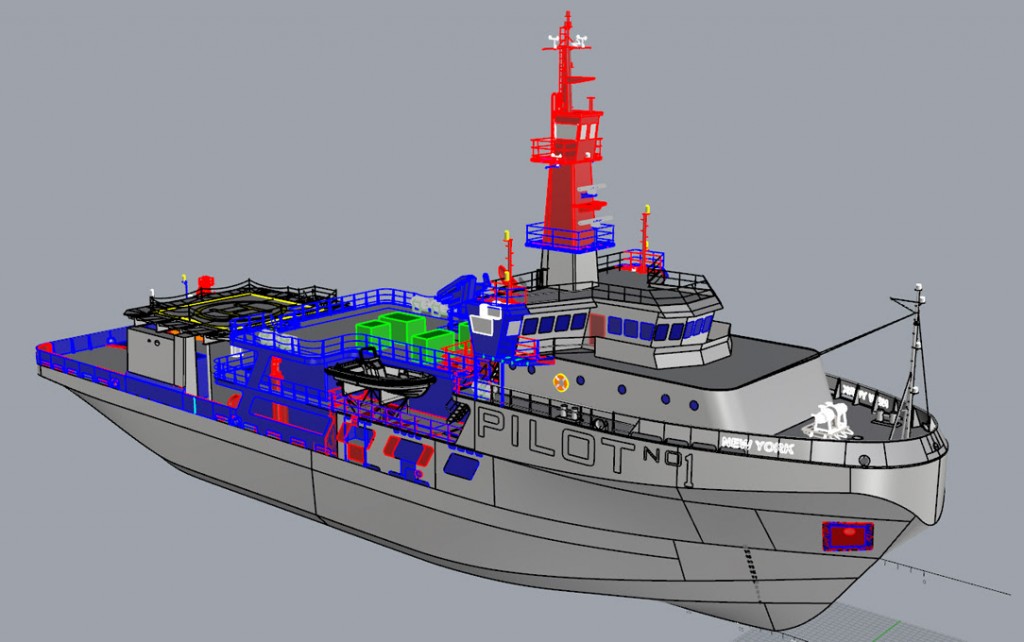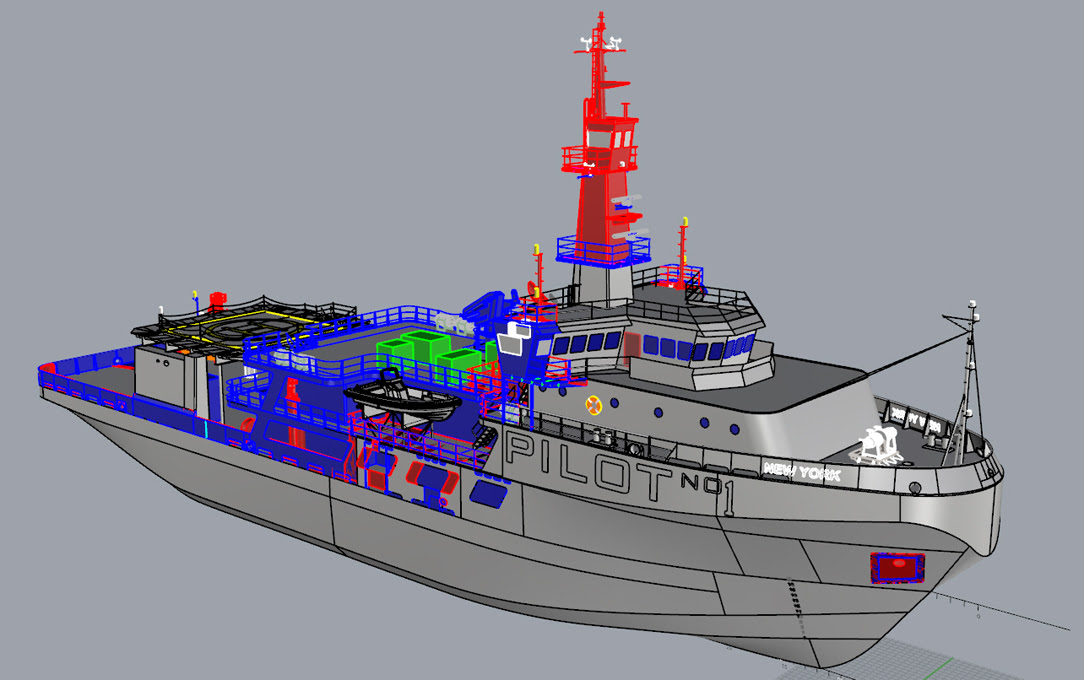(MYSTIC, Conn. and NEW YORK) — The conversion is nearly complete of the former oil spill response vessel (OSRV) Maine Responder to a pilot station vessel for the Sandy Hook Pilots Association of Staten Island, N.Y. The conversion work contract was competitively awarded to Feeney Shipyard of Kingston, N.Y.
The Sandy Hook pilots have been piloting ships in New York Harbor for over 300 years. They operate a pilot station boat by Ambrose Light year-round and in all weather conditions. As a result, they require a robust vessel to serve the entrance to New York Harbor, Hudson River, Hell’s Gate and Long Island Sound. P/B New York is the largest vessel in the Sandy Hook fleet and has served them well for the past 48 years, but is due to be retired.

JMS Naval Architects has a long history of providing engineering support for the Sandy Hook pilots’ vessels. When the 208-foot Maine Responder became available, the pilots association turned to JMS to provide marine surveying and naval architecture services to evaluate the vessel prior to purchase, develop the conversion concept design through a contract-level design bid package, engineering support to the shipyard, and owner’s representative services on behalf of the pilots during the vessel conversion.
JMS’ work began by surveying the OSRV ahead of the vessel purchase to assess its general condition and suitability to being converted to a pilot station boat. A comparative seakeeping analysis was also performed to determine the OSRV’s motion characteristics while on station.
In general, the conversion design included extensive modifications to remove the oil recovery systems, addition of a large deckhouse for the pilot berthing, a lounge and mess, and incorporating operational capabilities specific to the pilots’ mission.
Other modifications included the following additions:
• Port rescue station with net recovery system.
• Deck de-icing systems at pilot boarding stations port and starboard.
• Hot water/steam system for power washing to de-ice the pilot boats when alongside in winter.
• New knuckle-boom crane to service the port and starboard RIBs and load gear pierside.
• Increase existing 20,000 gallons of potable water capacity to 60,000 gallons.
• Small boat fueling/transfer stations, port and starboard.
• Main deck and 01 deck (two-tier) deckhouse extension to encompass dedicated pilots berthing, mess and lounge.
Pilothouse modifications included the following additions:
• CCTV cameras to pilot boarding areas with screens on pilothouse port and starboard and in crew mess.
• Two-way communication speakers from boarding area to the pilothouse port and starboard bridge wings.
• Buzzer system for communication between the pilothouse and crew mess and the port and starboard boarding areas.
• Floor-to-ceiling windows facing aft and down for viewing of pilot boarding station.
• Relocating controls to bridge wing, steering, engine, VHF, gyro repeater, bow thruster, and new two-way talk back to boarding station.
• Side windows facing outboard, sliding/opening.
The completed vessel retains its helicopter pad, ABS classification and COI as a Subchapter I vessel. The vessel, to be renamed P/B New York, is scheduled for delivery in September.
– JMS Naval Architects

